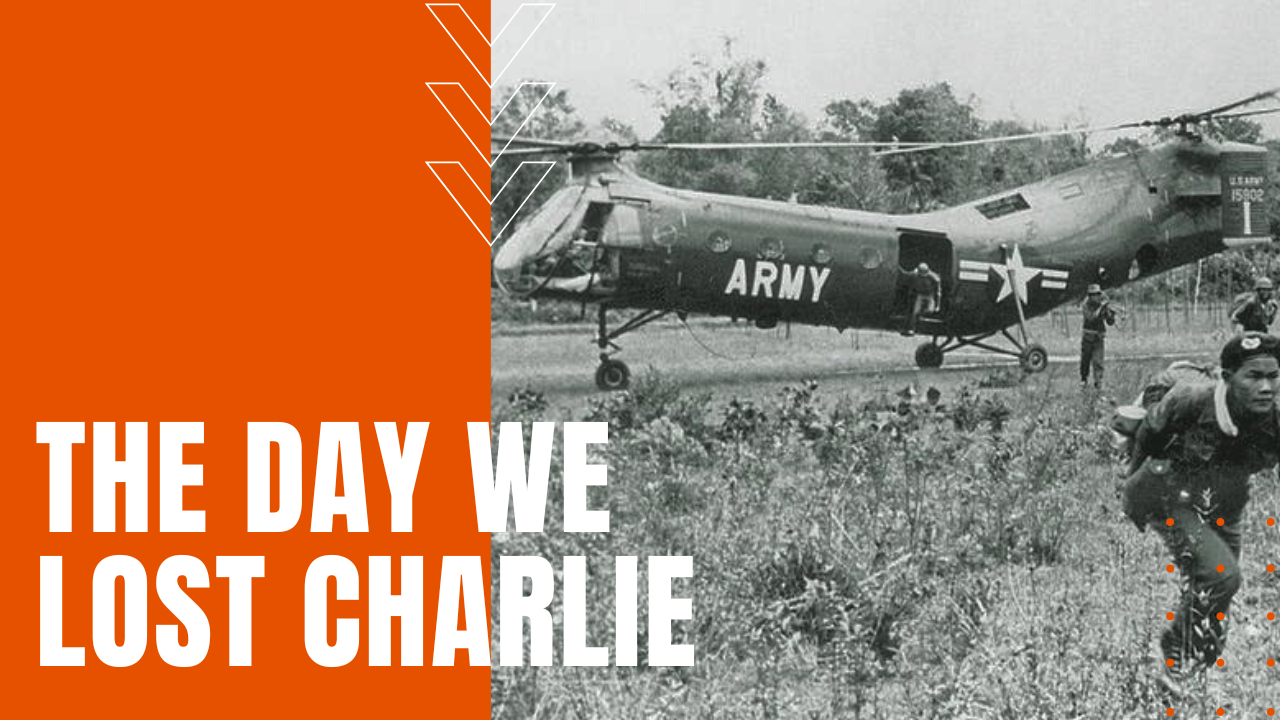The Day We Lost Charlie

On December 22nd, 1962, a little more than two years before the United States’ official entry into the Vietnam War, Captain Thomas R. Messick of the 81st Transportation Company led a top secret mission to Qui Nhon, a one-hour easterly flight from their Pleiku Air Base in the Central Highlands.
Flying Bananas
Known as “flying bananas,” a mission requiring 15 H-21 Shawnees had proved difficult to put together, since the twin rotor helicopter required eleven hours of maintenance for every one hour in the air. Joining the mission was Chief Warrant Officer Charles Howard Holloway, who had arrived in-country only a week before the mission, and while Charlie had been trained to proficiency on the single rotor Sikorsky H-34 Choctaw, the company’s newest pilot had only two hours of touch-and-go flight training in the more challenging Shawnee.
Mission Planning
Chosen as flight leader for the mission, Messick made sure Holloway flew with Chief Warrant Officer Dan Gressang, who was one of the most experienced pilots in the 81st. The mission teamed the 81st with the 8th Helicopter Company, with the goal of delivering 860 South Vietnamese soldiers onto three landing zones north of Tuy Hoa, a small fishing village along the coast.
No Pre-Insertion Air Strikes
After learning that pre-insertion airstrikes were off the table, due to the belief by commanding officers that such an offensive would alert the North Vietnamese to each planned insertion site, 29 flying bananas onboarded twelve soldiers each for string of insertion missions, guided in by Bird Dog pilots flying in front of each transport group. After Messick led the first group of bananas to their designated landing zone, they came under intense enemy ground fire, despite their unannounced arrival.
A Tragic Casualty
As Gressang and Holloway began to bug out, a bullet struck Holloway on the right side of his forehead, and while his seat harness held his unconscious body from falling forward onto the controls, the dead weight of his feet upon the pedals forced Gressang to fight for control of the aircraft. After the crew chief removed Holloway’s feet from the pedals, the rookie pilot died in a medevac Huey bound for an Army hospital in Nha Trang.
A Father of Five
A father of five, 31-year-old Charlie Holloway would be the fourth Army aviator killed during the largely secret and under-reported lead-up to the Vietnam War, awakening in members of the 81st, in Messick’s own words, that “we had not fully realized that we were no longer training for war, but were now in a war.” On July 4th, 1963, air base Pleiku, headquarters of the 52nd Aviation Battalion, was renamed Holloway Field, while the surrounding base was later renamed Camp Holloway, making the mission to Tuy Hoa, an early wakeup call for American fighting men in Southeast Asia.
